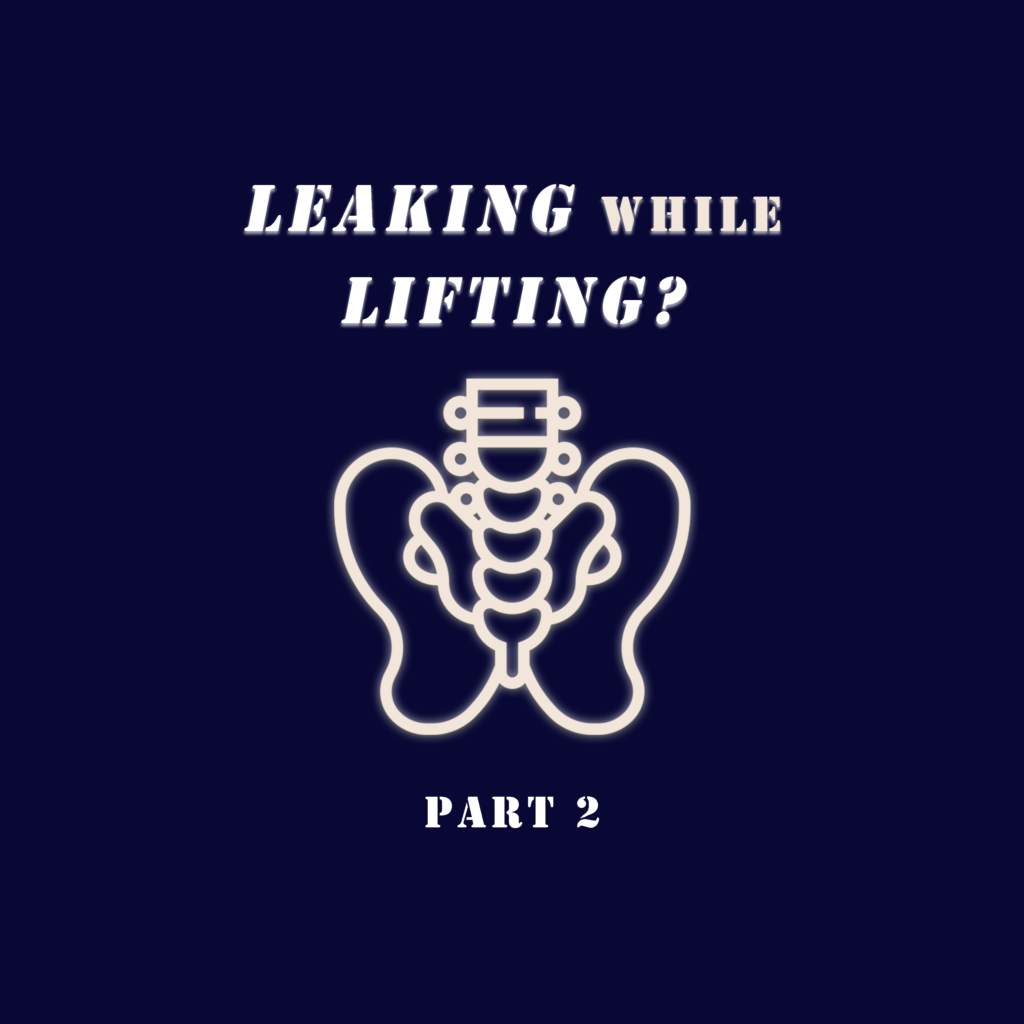
ALEEN TAN
Aleen Tan has been powerlifting for 8 years and competitively for 5. From a humble member of The Gym Nation, she has moved on to make numerous achievements in the sport under the guidance of Ronin Strength Co. Aleen has finished her Undergraduate Bachelor’s Honours degree program in Physiotherapy from the University of Sydney. Her research project was dedicated towards women’s preferences for pelvic floor information to advise future awareness strategies. With many more Women’s Health project ideas, she looks to specialise in Women’s Health Physiotherapy and furthering her studies in the near future.
Hi everyone, we’re back with part two of Leaking while Lifting! We thank you for the feedback from the previous pelvic floor article and we hope you find this article better in terms of clarity and conciseness.
In the previous article, we laid out the steps to identify and perform a pelvic floor contraction. The next step isn’t to jump into pelvic floor muscle exercises i.e. specific exercises that focus on the contraction of the pelvic floor, but to learn how to connect and coordinate the contraction of the pelvic floor with lifting. Contracting and doing more repetitions of pelvic floor muscle exercises wouldn’t help you accomplish much in terms of translating the skill into lifting if your brain doesn’t know an efficient way of engaging the pelvic floor muscles. The ability to coordinate the pelvic floor contraction during a lift is a skill and would need time and practice to achieve automaticity.
To make a conscious connection with these muscles, we start with breath work.
During inhalation, your chest rises and the diaphragm contracts and flattens to fill your lungs with air. The diaphragm pushes down against the organs in your abdomen and onto your pelvic floor. The pelvic floor then relaxes and lengthens to accommodate these pressures from the organs above.

During exhalation, the diaphragm relaxes and forms a dome shape, releasing the pressure it has been applying on the organs. The pelvic floor, abdominal and chest muscles reflexively contract and shorten to assist in emptying the breath. You will feel a gentle ‘lift’ of the pelvic floor as you exhale normally.

Give this a go and feel the pressure changes within your body as you breathe.
These slow and deep breathing techniques can be used to help you relax too. If you are someone who feels constantly anxious and worried about training the next day or simply feeling stressed out from life, taking some time the night before training and after training to do these exercises can be helpful for you. We recommend 3 sets of 8-12 x 360° diaphragmatic breaths with a minute or two rest in between sets.
Now, let’s try incorporating pelvic floor contraction together with your breaths.
We then incorporate this into our powerlifting movements, particularly squatting and deadlifting. Do note that these instructions are written specifically for women who only leak during lifting.
Try performing these with your body weight first:
You can do these for 1-2 sets, 8-12 repetitions each as warm ups before squats and deadlift. Once you get the hang of the rhythm and control of pelvic floor contraction, you can start using some light weights, 30%-40% of your 1 rep max, in the movement for practice. You may find it hard to feel the pelvic floor contractions at first as it is very subtle, with more practice overtime, you may find it easier to do so.
Now that we have reached the end of this article without turning it into a book, there are some things that you should take note. If you feel:
1. Pain while attempting the pelvic floor contraction
2. Pain during sex, peeing and passing motion
3. A bulge in your downsouth
I advise you to consult a women’s health physiotherapist to get an appropriate diagnosis for your leaking issues. Many conditions such as overactive pelvic floor muscles, weak/torn pelvic floor muscles and poor pelvic floor muscle motor control can contribute to urinary incontinence. Symptoms, i.e. your individual experiences, alone cannot be used to make a definitive diagnosis nor can they denote the mechanism behind the leaking. An appropriate assessment by a women’s physiotherapist will help identify the issue causing your leakage problems.
On the other hand, if you feel:
1. Feeling stressed and anxious about not doing this the right way
2. Difficulty contracting your pelvic floor muscles no matter how hard you try to do so
3. Difficulty understanding how pelvic floor contraction and coordination works.
Feel free to drop a message/comment to get in touch with me here!
Acknowledgement
We would like to thank Julia Hlaing (a.k.a @pelvicstrong on Instagram) for her input in this article. She is a women’s health and musculoskeletal physiotherapist from Sydney, Australia with a focus on pelvic related conditions amongst athletic females. She is also very competitive in an array of different sports from powerlifting to bikini modelling, having won the 2016 and 2018 ANB Swimsuit Pro. It is our pleasure to have Julia contribute to this article series to help women in powerlifting.
References
1. The pelvic floor connection: breathing is better than kegels – Remedy Physical Therapy. (2020). Retrieved 15 July 2020, from https://remedypt.com/the-pelvic-floor-connection-breathing-is-better-than-kegels/
2. Breath & the Pelvic Floor: Basic 360 Breath | Bloom Integrative Health & Movement Centre. (2020). Retrieved 19 July 2020, from https://bloomintegrativehealth.ca/breath-and-the-pelvic-floor-basic-360-breath/
3. How should you use your pelvic floor during exercise? | Mama’s Gotta Move. (2020). Retrieved 17 July 2020, from https://mamasgottamove.com/2019/03/14/how-should-you-use-your-pelvic-floor-during-exercise/
4. Neumann, P., & Gill, V. (2002). Pelvic floor and abdominal muscle interaction: EMG activity and intra-abdominal pressure. International Urogynecology Journal, 13(2), 125-132.
5. Madill, S. J., & McLean, L. (2006). Relationship between abdominal and pelvic floor muscle activation and intravaginal pressure during pelvic floor muscle contractions in healthy continent women. Neurourology and Urodynamics: Official Journal of the International Continence Society, 25(7), 722-730.
6. Madill, S. J., & McLean, L. (2008). Quantification of abdominal and pelvic floor muscle synergies in response to voluntary pelvic floor muscle contractions. Journal of Electromyography and Kinesiology, 18(6), 955-964.
7. Vesentini, G., El Dib, R., Righesso, L. A. R., Piculo, F., Marini, G., Ferraz, G. A. R., … & Rudge, M. V. C. (2019). Pelvic floor and abdominal muscle cocontraction in women with and without pelvic floor dysfunction: a systematic review and meta-analysis. Clinics, 74.

